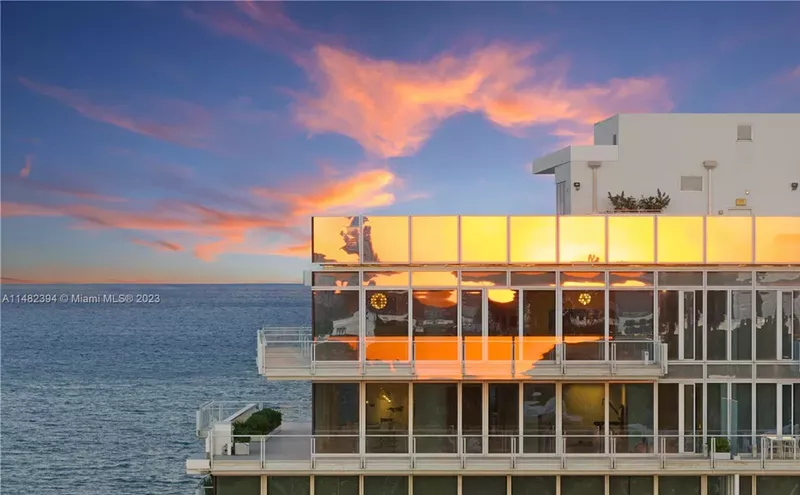Radio bulletins and the television news broadcast emergency messages: A huge sewer pipeline carrying Central Dade's waste water to the treatment plant on Virginia Key has burst, spewing millions of gallons of raw sewage into Biscayne Bay every hour. Public officials take to the airwaves urging residents to flush as little as possible and avoid all contact with bay waters until the problem is solved -- in several weeks, maybe months. Incidences of cholera and hepatitis skyrocket.
Miami's environmental disaster becomes front-page fodder from New York to Tokyo to London. Frantic Miami-bound tourists jam the phone lines at airline ticket offices around the world, trying to reschedule their vacations for other tropical destinations. And the Magic City braces for its worst winter season in history.
This is not the feverish nightmare of some nervous South Florida hotelier. In fact such a tragedy wouldn't come as any surprise to Dade's officials responsible for maintaining the county's sewage system and the health of its natural resources. For years they've known about the precariousness of the 36-year-old cross-bay pipeline. But beyond studying possible solutions, they've done nothing to forestall the impending calamity. "The high probability of the line's potential collapse in the near future, resulting in an untold catastrophe, screams for immediate action," warned a Dade County Grand Jury report this past May. "Dade County and WASA [the Water & Sewer Authority] should make this project the county's highest priority."
Since 1956 the cross-bay sewer line -- a reinforced-concrete pipe six feet in diameter -- has linked the mainland to the Central District Wastewater Treatment Plant on Virginia Key. The pipeline, which lies in an underwater trench beneath at least five feet of sand, shells, and limestone material, enters the bay beneath Bayfront Park and cuts a straight line to Virginia Key. Everything flushed down the toilets or washed down the drains in homes and offices in the cities of Miami, Coral Gables, South Miami, and Miami Springs, as well as neighboring areas of unincorporated Dade, enters the pipeline. About 100 million gallons of effluvium roars through the conduit every day, enough to nearly fill the OrangeBowl.
Dade's engineers began marking the waste line's final days after two similar, but smaller, concrete pipes located in the same antiquated sewer system sprung leaks in the late Eighties. A pipe installed in 1956 under the Miami River at NW Fourth Street burst in 1987 because of internal corrosion. The following year a concrete pipeline installed in 1971 under Flagler Street at SW 67th Court collapsed. It took engineers ten days to find the river pipe's leak and temporarily plug it. Waste water was diverted to two other pipes during the next seven months as a contractor repaired the break. With comparative ease, the Flagler Street pipe was patched within a day because it was not underwater and easily accessible to workmen.
But the cross-bay pipeline is underwater and underground, it is continually in service, and there is no way to divert the flow, all of which will enormously complicate repair efforts. Furthermore, engineers can't check the pipe's condition and can only guess how long it's going to last. The Metro-Dade Department of Environmental Resources Management (DERM) has estimated that corrosive hydrogen sulfide gas in the sewage will eat through the seven-inch-thick pipe by 1997. And that calculation, admits Jose Lopez, chief of DERM's Wastewater Section, may be optimistic.
Correspondence between DERM and the Metro-Dade Water & Sewer Authority Department (WASA), which operates and maintains the county's sewer system, indicates that officials in both agencies have been trying to develop plans for a new pipeline since the mid-Eighties. (While the planning and installation of a pipeline is WASA's reponsibility, DERM has provided input regarding the environmental impacts of various proposals.) After evaluating several cross-bay routes for their cost and environmental ramifications, WASA, DERM, and the Miami city manager's office settled two years ago on a route below the seabed along the south side of the Rickenbacker Causeway.
Hoping to find a cheaper, faster, and more environmentally sensitive way to construct a new pipeline, WASA director Garrett Sloan began investigating the possibility of tunneling under Biscayne Bay to lay the pipeline instead of digging a trench in the bay bottom. According to Sloan, a feasibility study completed this past May shows that the tunnel option would probably not save money or time, but would do less harm to the environment than a conventional pipeline. "Its big advantage is environmental," argues Sloan. "It won't disturb the seagrass on the bottom of Biscayne Bay in its construction."
While DERM and other regulatory agencies are optimistic about the tunneling project (estimated cost: $60 million), they're waiting to see the final plans before giving full approval. To that end WASA has begun the process of selecting a consultant to design the tunnel. "There are no warranties in life," DERM's Lopez cautions, "but as far as we know, the tunnel is the way we are going."
With replacement plans finally under way, officials at WASA and DERM are tossing blame for the delay back and forth. "We had many meetings and many discussions with the environmental people," complains Sloan, "and no matter what you came up with, if there was any disruption of seagrass, they said no. We were out there three or four years. We kept trying and trying and trying. But the attitude of the regulatory agencies is, `We don't care if you ever get it done.'"
Several DERM officials, annoyed by the assertion that they hindered the development of a new pipeline, suggest that WASA never elevated the replacement project to a top priority. "I wouldn't agree that the department has ever been an obstacle to the replacement of the pipeline," contends Susan Markley, DERM's chief of the natural resources division. "The department worked closely with WASA to evaluate different routes, and we recommended routes that minimized impacts to the seagrass and other natural resources. I don't believe any environmental regulatory agency ever stated or put in writing that the project couldn't be permitted if there were impacts to sea grasses or other resources."
Meanwhile, everyone is nervously watching the clock. WASA has prepared a contingency plan that briefly outlines emergency responses to a pipeline failure. In the event of a rupture, WASA would try to divert some of the flow to waste-treatment plants in South and North Dade, but most would admittedly be discharged into the bay and the Miami River through the broken pipe and emergency outflows. Residents, according to the emergency plan, would be asked to "reduce sewage flow as much as possible" and "avoid contact with contaminiated surface water." Divers would locate the leak, and a marine contractor would attempt to patch it as quickly as possible, or replace the damaged section of pipe. At worst, says Lopez, sewage would pour into Biscayne Bay for three or four months until repairs were completed.
With this dreadful scenario in mind, Sloan insists he's rushing the replacement project and optimistically estimates that work could begin by next March. That is, if the design and bidding processes go smoothly. (The project's cost will be included in a $150 million sewer bond issue later this year.) Sloan believes the new pipeline should be in place by mid-1996, leaving no room for error and only months to spare before DERM's predicted Doomsday.










